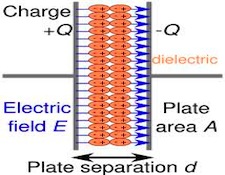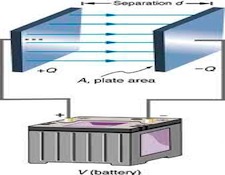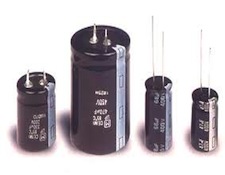It’s the time of year for saving money!

As anybody who has been in or
around High End audio for any time at all will tell you, the very best way to
prove that you’re an engineer or genetically superior or just a FaceBook troll
is to deny that audible differences exist in practically anything. If it can’t be measured, these engineers or Übermenschen or FaceBook trolls always
say ― or even if it can
be measured but it can’t be instantly identified by a statistically significant
percentage of listeners in a double-blind test, it’s all “voodoo”,
self-hypnosis, wishful thinking, or “placebo effect”, which seems to be the current
pretend-intellectual term for all of the above.
Now, in point of fact, there
really have been (and still are) plenty of products that seem like they can’t
possibly work in any conceivable physical universe. You’ve all seen them or
heard of them, from the magic discs, magic dots, Bedini boxes and Peter Belt
goodies of days of yore, to the magic brass bowls, magic feet, and magic
“purifiers” (of any number of things) being touted (and bought and sold for
amazing prices) today. Some of these may very well work, and they may very well
only seem to be outrageous because their inventor or discoverer really has
invented or discovered something really new. (Remember Arthur C Clarke’s statement
that “Any sufficiently advanced technology is indistinguishable from magic.”)
Even so, they do strain the credulity of all but the most over-the-top enthusiasts.
It isn’t just the “weird-seeming”
stuff, though, that has come under attack. Whole categories of much more
conventional things – especially those that a great many people agree DO sound
different have been questioned by claiming-to-be-knowledgeable
“Techno-Luddites”. Amplifiers are one good example, with the AES fighting
tooth-and-nail to prove they all sound the same in at least two widely
publicized double-blind tests. CD players were another. The “Perfect Sound
Forever” set insisted for a good long time that, because the Nyquist Sampling
equations indicated that even the earliest CDs and CD players had to be
perfect, they WERE perfect, no matter how bad they sounded.

The one thing, though, that
has been challenged, denied, declared to be voodoo, and insisted to be nothing
more than “placebo effect” most consistently and for the longest time is
cables. Somehow, everybody can accept
that a tiny rectangle not much bigger than a postage stamp can be a highly
technical, fiendishly complex microcircuit, containing thousands of electronic
components, programmable to do astounding things, but, to a goodly number of
people, including a surprising percentage of audio industry professionals,
cables are just wire, and “wire is wire”; in no way capable of affecting the
sound of a system.
The only
things that matter in designing a cable, the doubters and trolls will tell you,
are inductance (L), capacitance (C), resistance (R), and, for balanced lines, very long lines, or very
high (digital, RF, or video) frequencies, characteristic
impedance (Z0). Materials don’t matter (they say); geometry or mode
of construction doesn’t matter; dielectrics don’t matter; nothing else at all
matters; it’s all just LRC.
Have any of these “experts”
(and many of them truly ARE experts, but in some other electronic field) ever
considered that, to the extent that cables exhibit calculable amounts of
inductance, capacitance, and resistance, they ARE inductors, capacitors, and
resistors? Have they ever heard of premium components? Have they ever used
them?

Here’s where it gets
interesting: Many of the very same industry professionals who most loudly
proclaim even the idea of premium cables to be foolish use premium inductors,
capacitors, and even premium (and very expensive) resistors in the electronics they
design and premium wiring in their speakers.
How can that be? Isn’t
anything that measures the right number of millihenries, microfarads, or Ohms
identical in performance to anything else of exactly the same measured value?
Isn’t 50µF exactly the same,
regardless of what a 50µF capacitor is made of? (Ceramic, mica, polyethylene,
polycarbonate, polyester, Teflon, and many other materials all come to mind,
just for the dielectric, and metal foil or metallized film for the plates) Or how it’s made? Or whether it’s a single
unit or a bunch of caps of the same total value?
Similarly, if wire is just
wire, why do capacitor manufacturers offer capacitors with leads made of
anything from steel to “six-nines” copper? And why do they offer them either
solid or stranded, or bare or insulated with anything from PVC to Teflon?
Why do sophisticated and
knowledgeable electronics designers in areas anywhere from aerospace to audio
buy premium capacitors and spec’ them into their designs? Obviously, there must
be things about premium capacitors (or inductors or resistors) that are
important besides just their measured values.
Certainly some of those things may have to do with configuration, power
handling capacity, or packing density, but aren’t there others that have
nothing to do with anything other than performance? And, in audio equipment,
might not some of that performance have to do with how the capacitor or
resistor or inductor (and thus the entire product and the entire system)
sounds?
If capacitors, resistors and
inductors can have a sound of their
own and can affect the sound of a
product or a system that they’re part of, and if, as the “LCR Set” insists,
cables are just capacitors, resistors, and inductors, why can’t cables sound,
too?






BRAVO!!!
Mr. Skoff has again provided us with enough food for thought that you could feed your entire audio family a hearty meal. Everything has a sound!
To anyone who thinks that materials don’t make a difference, then please explain to me why violins are not made from MDF?
This is a specious comparison. You can make a violin out of thin MDF. Why don’t people make those? Have you tried it? Has anyone tried it? Did Stradivarius decide *not* to use MDF because there was so much around and it was cheap crap? Or, did they not have MDF and the standard was set? How would we ever know?
Violins, my guess, are not made out of MDF because they weren’t made in the first place that way. What if they had been? Then we would have said, “who makes violins out of anything but MDF? Who would do such a crazy thing?”
We’re talking about context, and appropriateness when we talk about material. Concrete? Bad for speaker cones but good for sidewalks. Carbon fiber? Actually good for violins, Formula 1 cars, and speaker cones. Check out luisandclarkDOTcom. See what Yo-yo Ma thinks about this material.
It’s about using the appropriate material for the job, without getting caught up in going further than necessary once the needs are understood. Because everything has a sound, doesn’t mean that it “adds” sound to a given situation. The knobs that you turn on some of your audio equipment, I mean the actual nob itself, not the potentiometer, has a sound when you drop it on the floor and it bounces. IT’s sort of like, “blk blk blk blk…” if it’s plastic. However, this contributes nothing to the sound of your stereo.
There is a company that will sell you rocks to tape to your cables where they are inserted in an amplifier or other equipment. You literally tape bags of rocks to your cables. Cost? $129. Do you believe rocks have sounds that will somehow magically contribute to your sound? Why not fill your whole living room with rocks? Why not the whole house while we’re at it?
Having had this ‘discussion’ at length with those of the ‘it all sounds the same’ stripe, they are insistent that component parts all sound the same, too. Either they work at audio frequencies (in which case it all comes down to component values) or they don’t (in which case any discussion of component quality becomes functionally irrelevant). In the same breath, they will usually exclaim that manufacturers only use expensive components to fleece the customers, to give the products audiophile credibility, or because the designers simply don’t understand what they are designing (usually left trailing, implying “…unlike a genius like me”).
The argument is self-sealing, because if you point to a product containing higher grade components sounding better than one that doesn’t, you are either delusional or ‘a part of the problem’. Things then inevitably begin to revolve around lengthy double-blind listening tests as the only arbiter of performance, and to recommend anything else is criminally negligent.
After a particularly heated argument on a similar topic on a UK forum (“only cartridges and loudspeakers can sound different, and even here the differences are grossly exaggerated”), I ended up challenging one of the most entrenched object-to-it-all-ivists, saying “would you buy a car purely on the specifications?”
Perhaps unsurprisingly, he claimed that’s precisely how he chooses his automobiles!
If you speak to the component manufacturers themselves, they will often say the components are designed that way due to a series of listening tests, but then begin to look furtive as if they’ve potentially opened themselves up to ridicule. Because of course, everyone knows the last thing anyone should do with a product that is designed to be listened to is listen to it!
Very elegantly stated, Mr. Sircom. And correct as well…:)
What do you offer in reply? You do know of the weakness of the human hearing system compared to measurements by sensitive devices that can measure down to the noise floor, I assume?
Explain to me why a $20,000 RCA cable, which at least used to exist, is going to handle a few volts better enough to justify it’s price.
Also, explain after that how an expensive power cable will improve your system with hundreds of feet of Romex® behind it.
Then we can get to the blind tests regarding speaker cable that have been fairly conclusive across the board, except for those created for a purpose other than showing, and only showing, the objective facts of how *people* actually perceive, rather than how they think they perceive.
This sounds as if you understand very little about component design, which is primarily in the conforming to known standards to reach certain goals, unless you really are using faddish audio words of the moment to fleece people.
In order to know how something sounds, compared to something else, first you take out people’s built in weaknesses at perception. This is the same reason they have sensors on F1 cars; because they drivers cannot tell them as much as the sensors can. Our measuring devices over every aspect of what we can hear, except for what humans convince themselves of, is well understood.
What’s not understood by the people who buy into the audiophile hogwash, is how their hearing, and sound works. I’ve worked my whole life on these things, only to see unschooled ruffians come in with non-audio words like, “warmth, pace, “sounds like a good sandwich.” We have words for these things that accurately describe what equipment does. Only those that don’t understand this are open to being sold audio things that are the same as snake oil.
Double blind tests are the gold standard in every other research endeavor. If Science sets out to study something, it doesn’t ask, “we should simply ask everyone what they think, and use that as the gold standard, we don’t need to objectify the tests.” The car engineer, “we don’t need to design safety in and test it, we’ll just ask the safety guys what they think we should do and do that.”
If a person doesn’t understand, specifically, what their hearing deficits are, what the masking effect does for listening, etc, as well as what it actually takes to build quality audio components (by quality I mean transparent – low distortion, flat response curves, etc) they will have problems getting objective facts and convince themselves that they know, when they do not.
Yeah, and there ain’t no such thing as 6 nines copper either. CDA-101 is as far as it goes(Solid ingots of copper) The rest is marketing,
The reason for using “premium” capacitors, inductors, and resistors in a circuit is because “standard” components have high tolerances, often plus or minus 20 percent or even more, meaning that, because of the variations, they can have an audible effect on the signal. Some units may be fairly accurate and some may sound like crap. So, using low tolerance precision components assures that the circuit will work exactly as designed.
However, assuming one uses decent quality signal cables, and decent speaker cables capable of carrying the current load, one does not have these tolerance variations. I have yet to see any scientific double blind test where anyone could reliably tell the difference between decent quality cables and high-priced esoteric cables. Until I do, I’m not wasting my money on high priced “audiophile” cables.
I’m not an engineer and I don’t know how to conduct scientific experiments to test cables. I have a very decent mid-range system. I have listened to the same exact system and same exact source of music using both fairly cheap and very expensive speaker wires. My ears could not tell the difference and that’s what counts for me and not some scientific measurement gobbledygook. As far as all component parts sounding the same, music from my Oppo 103 universal player sounds 10 times better than my old 5-disk Samsung CD changer. But that doesn’t mean cables have to sound differently also.
Why audio and HDMI cable always become a hot topic to argue about? If some audiophiles can justify buying a $5000 cables, then why they never complain the same about their USB or SATA interconnects? They really should complain about those too because if it ain’t $1000 than it doesn’t transport 100% identical bits within (or does it?)
In my point of view, there are some certain boundaries for cabling to get between “cheap dirt but bad” and “standard quality you don’t even need to spend more than that”
A $1 USB cable may get wobbly, results in error and has concerning build quality, but look for $5 or $10 cables then you’re good to go. Spending more than that result in irrelevant and diminishing returns.
Same as speaker cabler or HDMI cable. Just get a “standard quality” so it has adequate build quality to ensure durability and you’re great. No point of getting “vacuum super cooled pure copper with supermoded ferromagnet jacket” cable.
For me, the fun of building a quality hifi (or any other system) is getting the best out of your system for as little money as possible. It’s called efficiency people, ever heard of that?
Instead waste so many dollars for indiscernible difference in cabling, I’d buy a quality speakers instead. They don’t lie as much as a mere cabling.
Putting aside the big problem of expectational bias for the moment, and if for the moment we assume that there are cables that sound different and this difference is due to measurable differences in the cables of inductance, capacitance, and resistance (I know not everyone agrees with this – just hear me out), I would like to present the following.
I find it funny that the prevalence of specialist cables started to come about not long after tone controls were vilified and banished to the trash heap.
I have gotten the impression that people that like the idea of specialist cables seem to use them in a way that corrects issues with tone in some part of the frequency range. They may not realise it is that – it might be that they try different cables and one particular model gives them “amazing clarity”. Perhaps they just needed a bit more treble, or a bit less bass. Or something else along those lines.
Unfortunately the cable that happened to work might have been the most expensive one they tried. So they might actually hear a difference, and that difference in their system might be measurable as a decrease in bass, but they don’t connect the dots that it is not the cable that is amazing and better than all the others they tried, but rather that their system/room had a bass hump and by trial and error and dumb luck they found a cable with the right combination of inductance, capacitance, and resistance that fixed this issue in their system. That same cable might be inappropriate in someone else’s system that already had balanced sound. That leads to opinions such as “the improvement I got is worth the $4000 it cost for a pair of interconnects – it was a much bigger improvement than a change of amplifier”
I can induce similar amazing changes in clarity of midrange, bass level, treble level with digital tone controls on my integrated amp. The effect can be quite amazing and I can see why people would pay thousands for the effect – if they didn’t have tone controls available.
I say bring back tone controls – who’s with me 🙂
Failing that, some honest cable company with no business sense could make a series of say 30 interconnects (or inline devices), each with different combinations of values of inductance, capacitance, and resistance for a reasonable price – say $40 each. Even stick coils or capacitors on them to achieve the desired result. Then people could just try out the various values until they found the ones that fixed the issues in their system. All for a reasonable outlay. Sounds like a hassle but probably easier and cheaper than trying various overpriced cables from various manufacturers hoping to strike gold.
Tone controls on a preamp/amp would be much easier though. I say bring back tone controls – who’s with me 🙂
Getting back to the problem with expectational bias, I can’t fix that while people still refuse to do valid comparative listening tests.